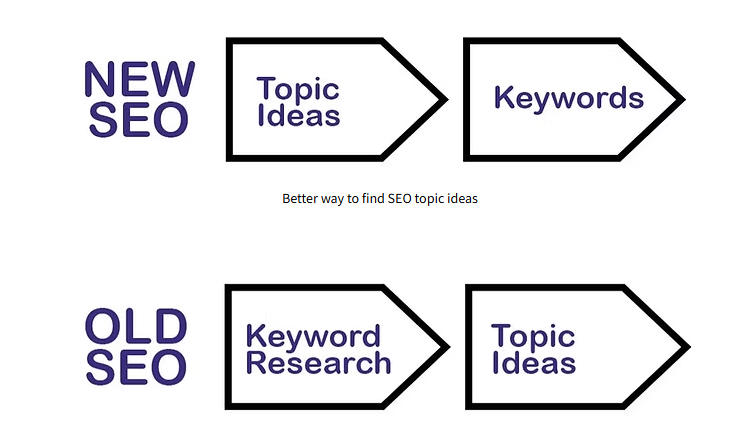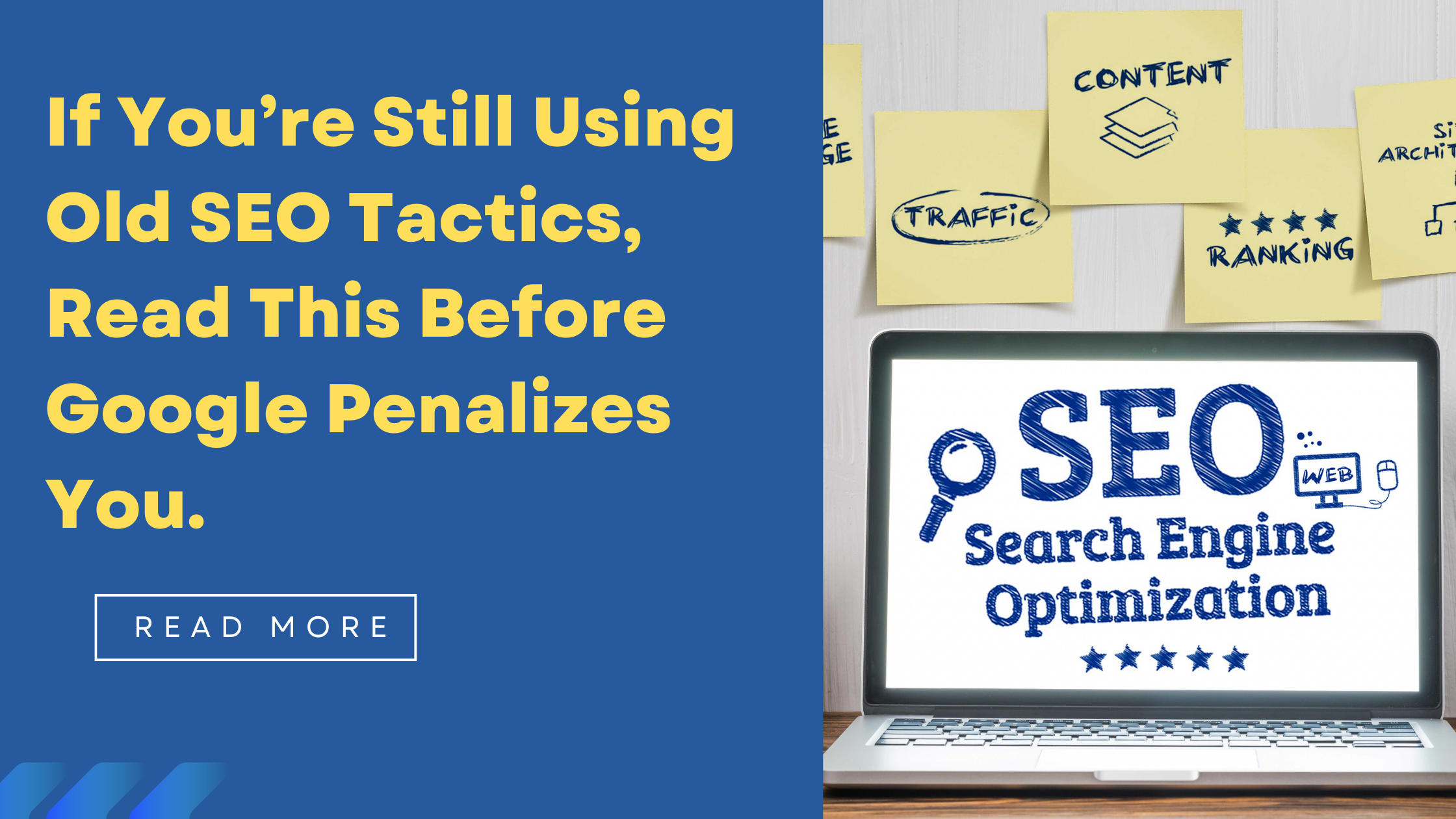Remember the good old days of the internet? When dial-up existed, and discovering what you were looking for on the internet seemed like finding gold?
Well, let me tell you, Search Engine Optimization (SEO) has evolved way, way beyond that. What did the trick even a couple of years ago may not only be useless now, but it could even damage your online presence!
Consider it this way: SEO is not about manipulating search engines; it is about making them know what your site has so they can display it in front of the right individuals. And just as we humans have become smarter in the way we search, search engines (particularly Google) have become extremely intelligent in knowing us.
Thus, let us learn about old versus new SEO, visiting the changes, and how these changes affect various sectors.
The Old School SEO: Simpler Times, Simpler Tricks
Back in the day, SEO was a bit wild. Search engines were not as intelligent, and marketers were able to get away with some fairly rudimentary (and occasionally spammy) strategies to rank.
Old SEO vs. New SEO: A Shoe Retailer Example
Old SEO (Early 2000s):
Imagine you’re a shoe retailer back in the early 2000s. Your website functions more like an online brochure—static pages with basic product descriptions, minimal interactivity, and little content beyond what’s in your physical catalog. Optimizing for search engines back then meant stuffing keywords like “buy shoes online” or “men’s leather shoes” into your page titles and meta tags. You might even repeat the same phrases in white text on a white background just to rank higher.
New SEO (Today):
Now, imagine you’re running that same shoe store in 2025. Your site is dynamic, mobile-friendly, and optimized for user experience. You’re publishing blogs about shoe care, creating video guides for choosing the right running shoes, and optimizing for long-tail keywords like “best running shoes for flat feet 2025.” You’re also building authority through backlinks, using structured data for rich snippets, and focusing on search intent—answering customer questions before they even ask them.
Keyword Stuffing:
This was the king of old SEO. You would repeat your target keywords like “buy shoes online” over and over again in your content, often to the point of sounding ridiculous. Get your shoes today!” You get the idea. The idea was simple: if the keyword appeared many times, Google would think your page was super relevant for that keyword.
Why it’s bad now: Search engines are far too clever for this. They see keyword stuffing as a sign of low-quality content and will penalize your site. It also makes for a terrible reading experience for your actual human visitors.
| Aspect | Old SEO (Early 2000s) | New SEO (Today) |
|---|---|---|
| Keyword Type | Short-tail keywords (e.g. “shoes”) | Long-tail & semantic keywords (e.g. “best running shoes for flat feet”) |
| Keyword Usage | High-density keyword stuffing | Natural language usage and keyword relevance |
| Placement Strategy | Stuffed in meta tags, titles, and body | Strategic placement in titles, headers, content, alt text |
| Search Intent | Ignored or assumed | Prioritized (informational, navigational, transactional) |
| Content Optimization | Static content optimized only for keywords | Dynamic, helpful content optimized for user needs and intent |
| Synonyms & Variants | Often ignored | Included and encouraged (thanks to semantic search) |
| User Experience | Secondary to keyword use | Central to SEO performance |
| Keyword Tools | Basic (manual research, hit-or-miss) | Advanced tools with intent analysis and topic clusters |
Crappy Content, Lots of It:
Quality often took a backseat to quantity. The belief was that more pages meant more chances to rank. So, you’d churn out articles with minimal information, just to have content with your keywords.
Why it’s bad now: Google prioritizes high-quality, valuable content that truly answers a user’s query. Thin, unhelpful content won’t rank, and it will frustrate your audience.
Shady Link Building:
Getting links from other websites was, and still is, important. But back then, people would buy links from low-quality, irrelevant websites, or participate in “link farms” where websites just linked to each other for the sake of it.
Why it’s bad now: Google’s algorithms are excellent at detecting unnatural link patterns. Links from irrelevant or spammy sites can lead to penalties. It’s all about quality and relevance today.
Ignoring User Experience (UX):
Website speed, mobile-friendliness, and easy navigation weren’t major concerns for SEO. If your site loaded slowly or looked broken on a phone, it wasn’t as big a deal for rankings.
Why it’s bad now: User experience is paramount. If your site is slow, hard to navigate, or not mobile-friendly, users will bounce, and Google will notice.
The New School SEO: Customer-First, Algorithm-Smart
Fast forward to today, and SEO is much more sophisticated. It’s less about algorithmic manipulation and more about truly serving your audience. The emphasis has moved from sole keywords to knowing user intent, delivering incredible value, and creating a reliable brand online.
Let’s go back to our shoe store owner example in 2025. What would their contemporary SEO plan be?
User Intent is King:
Instead of just thinking about “shoes,” the modern shoe store owner thinks about why someone is searching for shoes.
Instead of a page stuffed with “best-running shoes,” they would have articles like “Finding the Perfect Running Shoe for Your Foot Type: A Guide,” featuring detailed information, videos, and links to relevant products.
High-Quality, Engaging Content:
The focus is on creating content that is truly helpful, informative, and enjoyable for the reader. This means well-researched blog posts, in-depth guides, videos, infographics, and more.
A hospital website would not just list “heart surgery.” They would have a complete article on “Understanding Heart Bypass Surgery: What to Expect,” written by medical experts, with patient testimonials and FAQs. This demonstrates E-A-T (Expertise, Authoritativeness, Trustworthiness), a huge factor for “Your Money Your Life” (YMYL) topics like health.
Natural Link Building & Authority:
Earning links from reputable websites is still crucial, but it’s done naturally. This means creating such fantastic content that other websites want to link to it, or actively reaching out to relevant, authoritative sites for collaborations.
A manufacturer of specialized industrial parts might publish detailed white papers on industry trends or innovative solutions.
Voice Search Optimization:
With the rise of smart speakers and voice assistants (Siri, Alexa, Google Assistant), people are searching differently. They use natural, conversational language like What’s the best Italian restaurant near me?
A restaurant would optimize for questions rather than just keywords. Their website might have an FAQ section with answers to What are your opening hours? Or do you have vegetarian options?
Local SEO:
For businesses with physical locations, showing up in “near me” searches is critical. This involves optimizing your Google Business Profile, ensuring consistent business information across online directories, and gathering local reviews.
A plumber, a dental clinic, or a local boutique – all heavily rely on local SEO to be found by customers in their area.
Video and Visual Search:
People are increasingly using images and videos to search for information. Optimizing your visual content (with descriptive alt text, relevant filenames, and video transcripts) is becoming more important.
A fashion brand would use high-quality product images with descriptive alt text for image search, and create engaging video tutorials on how to style their clothing, optimizing these videos for YouTube and Google’s video search results.
Industry-Specific SEO Evolution
Let’s look at how these shifts play out across a few different industries:
Retail & E-commerce:
Old SEO: Product pages stuffed with keywords and thin descriptions, focused on getting product listings to rank for exact match terms.
New SEO: Rich product descriptions that anticipate customer questions, high-quality images and videos, user-generated content (reviews!), personalized shopping experiences, optimizing for “long-tail” keywords (e.g., “durable hiking boots for wide feet”), and ensuring super-fast mobile checkout. Visual search optimization is also huge here.
Healthcare:
Old SEO: Simple service pages, keyword-heavy text (e.g., “dentist near me, best dentist, cheap dentist”), little focus on patient education.
New SEO:E-A-T (Expertise, Authoritativeness, Trustworthiness) is paramount. Content is written or reviewed by medical professionals, comprehensive patient education resources (blog posts, FAQs, symptom checkers), focuses on local SEO for clinics, clear appointment booking systems, and secure, fast websites. The language needs to be sensitive and easy to understand for patients.
Manufacturing:
Old SEO: Technical jargon-filled content, focus on obscure product codes, minimal online presence beyond a basic website.
New SEO: Creating valuable B2B content (white papers, case studies, industry reports) that positions the manufacturer as an expert, optimizing for specific industrial terms and technical specifications, clear product categorization, ensuring mobile-friendliness for engineers on the go, and using schema markup to help search engines understand complex product data. Building authority through thought leadership is key.
Hospitality (Hotels, Restaurants):
Old SEO: Listing basic amenities, keyword-stuffing location names (e.g., best hotel London), and reliance on travel agencies.
New SEO: High-quality visuals, user reviews as a major ranking factor, local SEO dominance (“restaurants near me with outdoor seating”), voice search optimization for common questions (“book a room at The Grand Hotel for next weekend”), detailed amenity descriptions, engaging blog content about local attractions, and mobile booking experiences. Building a strong brand story online is also crucial.
Conclusion
While the algorithms and strategies change, the fundamental principle of quality SEO doesn’t: be the best experience you can for your users. Search engines consistently attempt to give the most relevant and highest-quality results possible to their users. If you simply target creating a really useful and nice experience for your audience, you’re already performing most of the new SEO, aren’t you?


